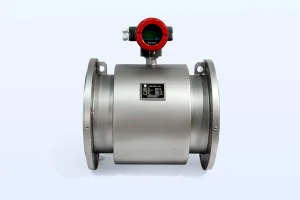
超音波流量計は,透明な液体のトランジットタイム方法と,汚れや泡のようなビットを持つ液体のドップラー効果の2つの主な方法を使用して正確な測定を提供します.信号処理の改善,複数パスの設計,トランスデューサの慎重な配置は,結果をより正確にします.温度と圧力の変化を修正し,良いセットアップを加え,外部の問題を削減します.Chen Shuoの超音波フローメーターは、デュアルチャネルバックアップ、幅広いフローレート、ライブチェックなどのクールな機能で特徴付けています。これらは水システム、HVAC、および工場作業のためにそれを素晴らしくします。適切なセットアップおよび容易なメンパンメントは長期間それをよく働かせます。
超音波流量計は,液体を通じて高周波音波を送ります.彼らは流れがどのように波を変えるかを見ています。この方法は液体に触れないので、超正確で柔軟です。圧力の損失も起こらない。2つの大きなアイデアがこれを実現させる: トランジット時間方法とドップラー効果。
トランジットタイム方法は簡単な事実に基づいています。音波は流れに向かって移動するときよりも速くなります。パイプの対立側に2つのトランスデューサが座っています。一方は音波を送り、もう一方はそれらを捕まえる。メーターは、流れと一緒に行く波と流れに対する波の間の時間差をチェックします。この違いは、液体がどれだけ速く動くかを示します。ほとんどビットがないクリーンな液体で最適です。これらのケースには信頼性がある。
廃水や厚いスラリーのような泡やビットを持つ液体では,ドップラー効果は非常に有用です.超音波信号がこれらのビットに打ち込んで戻ります。信号のピッチの変化は、流れ速度を示します。運送時間の方法ほど正確ではありません。ただし、雲のある液体にとっては最適です。難しい状況をうまく対処できます。
良い信号処理により、精度が大幅に向上します。信号が到着するときにわずかな違いがある。現代の超音波流量計はデジタルツールを使用しています。これらのツールはノノイズを除去し 弱い信号を強くし 巧妙な数学を使って明確な結果を得る難しい場所でさえ、これはデータを堅固に保ちます。
ファンシーなテクノロジーでさえ、外部の要因は結果を混乱させることができます。最高のパフォーマンスを得るには,セットアップ,液体機能,変更の修正について考える必要があります.
鋼鉄、PVCまたは銅のようなパイプの材料は、音波の移動に影響を与えています。良いセットアップは、回転の流れを止めます。あなたは必要です まっすぐパイプ メーターの前(パイプの幅の約10倍)および後(幅の5倍)のセクション。これにより、流れが安定している。取り付けや密封の間違いにより、空気差や間違いが発生することができます。これは信号を悪化させる。
超音波流量計は,パイプ全体で安定した流れパターンを必要とします.しかし、厚さや温度変化、または液体のビットなどのものは、これを混乱させることができます。たとえば、滑らかな流れ(ラミナーと呼ばれる)と滑滑らかな流れ(例例例えば例例例えば、例例例えば、例例例えば、滑らかな流れ(ラミナーと呼ばれるだから、メーターはこれらの違いを処理するために設定されなければなりません。これにより、結果が正確になります。
音波は液体の温度や圧力が変わると速度を変える。これらの変更を修正しなければ、小さな変更でも時間の経過とともに結果を混乱させることができます。最高級のメーターには、これらの条件に基づいてすぐに計算を調整するセンサーがあります。これはすべてをトラックに持っています。
メーターの設計は、異なるケースでどれだけ機能するかを決定します。
マルチパスセットアップでは,パイプ全体の異なる角度でいくつかのトランスデューサペアを使用します.多くの場所で流れをチェックします。これは難しいフローパターンを均衡させ、小さな問題を無視します。シングルパスデザインはよりシンプルです。しかし、大きなパイプや不均等な流れではそれほどうまくいかない。マルチパス設定は通常より正確です。
完全な配列により、音波が正しい方向に向かうことができます。オフになったら、信号は弱くなり、間違った時間を示します。クランプは薄いパイプやプラスチックパイプを曲げることなく安定して保つ必要があります。良い調整により、測定が正しくなります。
現代の超音波メーターは,ノノノイズを削減するためにデジタルツールを使用しています.高速フリエ変換,適応フィルタリング,フェーズロックループなどのトリックは,実際の信号を背景背背景背背景ノイズから引き離します.このこの音は、震動や電気のブズから来るかもしれません。これらの方法はデータをクリーンに保つ。
超音波フローメーターの多くの中で、Chen Shuoの超音波フローメーターは、その賢いデザインのために素晴らしいです。それは高い精度のために構築され、前述した多くの問題を解決します。
デュアルチャネルシステムは2つの別々の信号パスを使用します。リアルタイムで測定を二度チェックします。一つのパスがバブルや汚れのために混乱したり 奇妙なデータを与えたりすると、もう一つのパスは続く。これは,水や工場設定など,常に監視を必要とするシステムにとって非常に重要です.
広いターンダウン比は,1メートルが精度を失わずに小さな流れや大きなサージを処理することができることを意味します.これにより、追加機器で現金を節約します。このようなシステムに最適です。 HVAC システム あるいは、流れが毎日大きく変化する都市の水網です。1メートルはすべてです。
内蔵チェックはメーターの健康状態を監視します。彼らはトランスデューサの状態、信号強度、温度変化などのものを見ています。小さな問題が大きな問題に変わる前にユーザーに警告します。いくつかのモデルは、過去のデータに基づいて自らを調整することもあります。これにより、メーターは信頼性が高い。
これらのメーターは多くの産業で良いです。厳しい構造とスマートな機能は,難しい課題に準備しています.

モデルはクラス1の精度基準に達しています。設定に応じて 0.03 m/s から 10 m/s までの流量を測定しますModbus RTU/TCP/IPなどの出力をサポート アナログ 4-20 mA。これらは制御システムに容易に接続します。DN15からDN1000までのパイプで作業し,鋼鉄,PVC,HDPE,または複合材料を処理します.これは、小さなプロセスラインや大都市の水パイプに適しています。
都市の水システムは,請求や漏れを見つけるために正確な流れデータを必要とします.水のサービスを停止せずにメーターを設置します。水網の計画のために明確で高品質なデータを提供します。これは、資源を賢く利用するのに役立ちます。
HVACシステムの水流のバランスを取ることにより、大きな建物でエネルギーを節約できます。広いターンダウン比率とデュアルチャネルのバックアップにより、物事がスムーズに動くことができます。建物の快適さを助け、コストを削減します。
化学工場では,正確な液体投与が品質と安全にとって重要です. 電磁流量計 腐食を簡単に取り扱い、きれいにします。しかし、非伝導性または危険な液体では、超音波計のようなより良いです。液体に触れず、難しい場所で安全に動作します。
良いセットアップとケアは、これらのメーターが長年にわたって素晴らしく機能し、時間とお金を節約することを確認します。
常にパイプを満たしてください。曲線やバルブの近くにメーターを置かないでください。十分な直線パイプ(上流10D、下流5D)がない限り。バルブが閉じられた場合は、メーターを上流に置いてください。ビットを持つ液体では、垂直マウントを使用します。これはフローパスに均等にビットを散布します。
超音波メーターには動く部品はないので、ほとんど注意が必要です。しかし、年に一度基準に対してそれらをチェックすると、問題は早期に発見されます。センサー表面を安全な方法できれいにします。トランスデューサを損傷させる可能性のある粗いツールを使用しないでください。
ほとんどの超音波メーターは,Modbus TCP/IPのようなデジタルセットアップを使用します.これらはイーサネットを介してSCADAシステムに直接リンクします。これにより、フローデータの記録とチェックが容易になります。IoTダッシュボードに接続することで,リアルタイムのトレンドを使用して問題を予測できます.これにより、メンテナンスは問題の修正から防止に移動し、仕事をよりスムーズにします。
信頼性の高いフローモニタリングを探しているプロのために、Chen Shuoの超音波フローメーターは最高の結果を提供します。そのスマートな技術は多くの産業に適合し、毎回正確な測定を提供します。
Q1: 超音波流量計は双方向流量を測定できますか?
A:はい、過境時間の超音波計は両方向の流れを測定できます。前方と逆方のフローの時間差を同時にチェックします。これが本当に正確になります。
Q2: 超音波流量計で再校正が頻繁に必要ですか?
A:いいえ、高度なモデルは自己固定機能を持っています。しかし、毎年基準に基づいてチェックすることは、特に重要な仕事の場合、スマートです。
Q3: これらのメーターは蒸気またはガスアプリケーションに適しているのでしょうか。
A:いいえ、標準的な超音波液体流量計は蒸気またはガスのために作られていません。特別なクランプオンガスバージョンは存在しますが、動作する方法は異なります。